The first day in Prague began with the sound of the alarm clock at 7:30 am. We would have had a fairly busy day ahead, because we had planned a visit to the Prague Castle (Pražský hrad in Czech).
The weather conditions had changed dramatically compared to the previous afternoon. Upon arrival, we were greeted by a very humid heat, which had left room for a very cloudy sky and quite low temperatures that morning. An advice I give you is to bring with you some warm clothes (a sweatshirt, for example) if you visit Prague in the summer, because the weather is very changeable, passing from the heat to autumn temperatures from one day to the next one – or even in the same day.
Background
The Prague Castle stands on a hill overlooking the Malá Strana (Small Town) district. It is in fact visible from different points of the city. It has an ancient history and the first nucleus dates back to the 9th century d.C. Initially it was the residence of the princes of Bohemia and only from the 10th century it became a royal palace.
It lived one of its moments of maximum splendor during the reign of Charles IV (1346-1378), when it became the seat of the Holy Roman Empire. The Royal Palace was rebuilt and the construction of the St. Vitus Cathedral began, following the style of the French Gothic cathedrals of that time.
After the death of Charles IV, the Prague Castle alternated moments of abandonment with others of splendor and expansion: additional walls and other surveillance towers were added, such as the Powder Tower, the New White Tower and the Dalibor Tower.
When the Habsburg dynasty ascended the throne of Bohemia in 1526, the seat of power was moved to Vienna and the Prague Castle lost importance.In the 16th century, the Royal Garden was built , to which were added other places of entertainment such as the Belvedere and the Ball Game Hall. The Cathedral and the Royal Palace underwent modifications and new residential buildings were built in the western part of the Old Royal Palace.
The construction of the Prague Castle reached its peak during the reign of Rudolf II, Holy Roman Emperor who became King of Bohemia in 1575, bringing his court back to Prague. His desire was to turn the Castle into an elegant center of power that could attract foreign artists, scientists and diplomats to itself.
The Defenestration of Prague in 1618 began a long period of wars, during which the Prague Castle was damaged and looted. The last great reconstruction of the Castle occurred in the second half of the 18th century, when the complex took on a residential style. However, the center of power remained in Vienna and the Castle continued to deteriorate.
In 1848, Emperor Ferdinand V moved to the Prague Castle, a period in which new modifications and extensions were made.
With the fall of the Austro-Hungarian Empire in 1918, the Prague Castle welcomed the first President of independent Czechoslovakia, Tomáš Garrigue Masaryk. The construction of the St. Vitus Cathedral was completed in 1929.
How to get to the Prague Castle
We took tram 22 to the Malostranské stop, in order to get to the Prague Castle. From there we went up to the castle using the Zámecké schody stairway. From this staircase, you can admire a beautiful view of the whole city – alas, that morning a little ruined by the clouds.
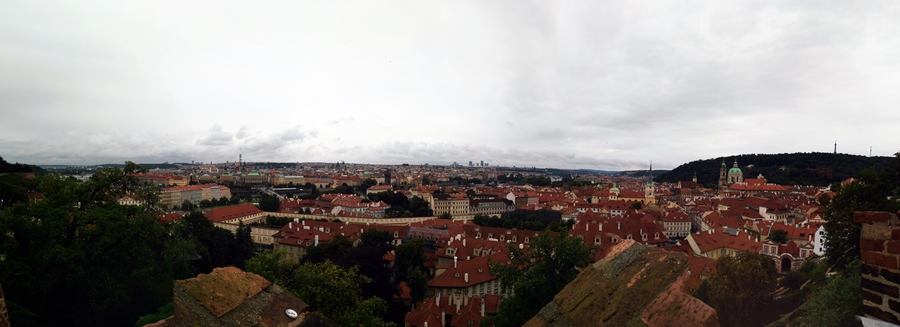
Prague view from the staircase Zámecké schody
Alternatively, if you don’t want to go up the stairs, you can always take tram 22 to the Pražský hrad stop (a couple of stops further on) and from there enter the main entrance of the castle.
The visit of the Prague Castle
The admission to the Prague Castle is with fee.You can choose to buy tickets for individual areas of the castle or buy itineraries:
Itinerary A
Old Royal Palace, the exhibition ‘The history of the Prague Castle’, St. George’s Basilica, Golden Lane and Daliborka Tower, Powder Tower, St. Vitus Cathedral
- Full price 350 CZK
- Reduced price 175 CZK
- Family 700 CZK
Itinerary B
Old Royal Palace, St. George’s Basilica, Golden Lane and Daliborka Tower, St. Vitus Cathedral
- Full price 250 CZK
- Reduced price 125 CZK
- Family 500 CZK
Itinerary C
The exhibition ‘The history of the Prague Castle’, The Prague Castle art gallery
- Full price 350 CZK
- Reduced price 175 CZK
- Family 700 CZK
For Prague Card holders, itinerary A costs only 100 CZK (ca.€ 3,70).
Old Royal Palace
Purchased the entrance tickets (in our case the itinerary A), we started our tour from the Old Royal Palace. It was the residence of the kings of Bohemia until the 16th century and an administrative center under the Habsburgs. Today the offices of the Czech President are located here.
Within this wing of the castle, it is possible to take photographs only if a photo license has been purchased at the time of purchase of the entrance ticket. If you do not have a photo license, the staff will not think twice about reproaching you, if they surprise you to take pictures – so, be careful!
You can visit several rooms, among which the most famous and particular one is surely the Vladislav Hall, a vast hall with a vaulted ceiling, once used for ceremonials. On the second floor is the Chancery, where the second Prague Defenestration took place in 1618. Returning to the ground floor, we come across the Diet Hall, where the nobles of the Bohemian kingdom met.
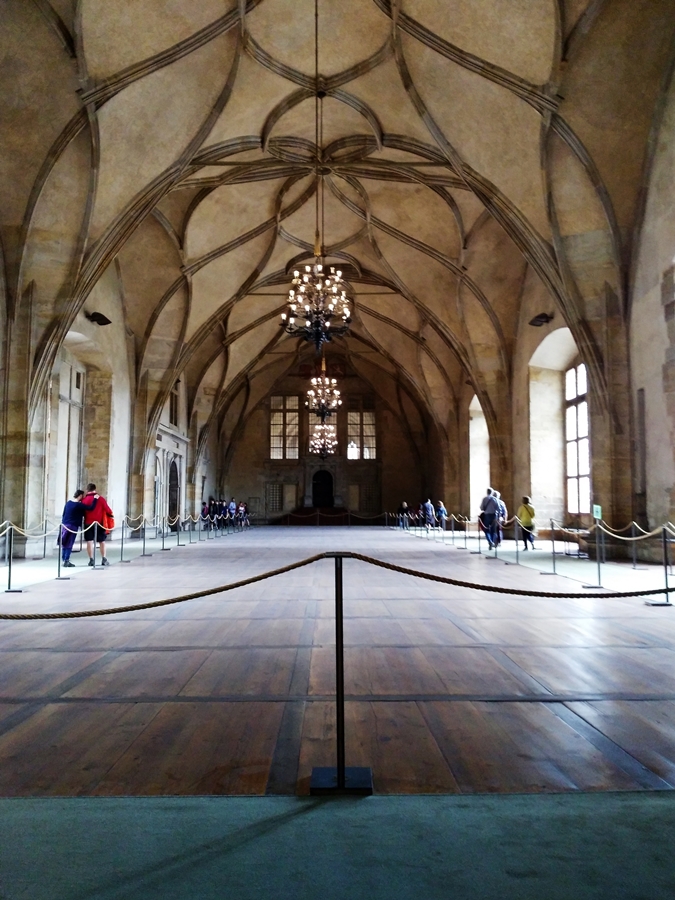
Vladislav Hall
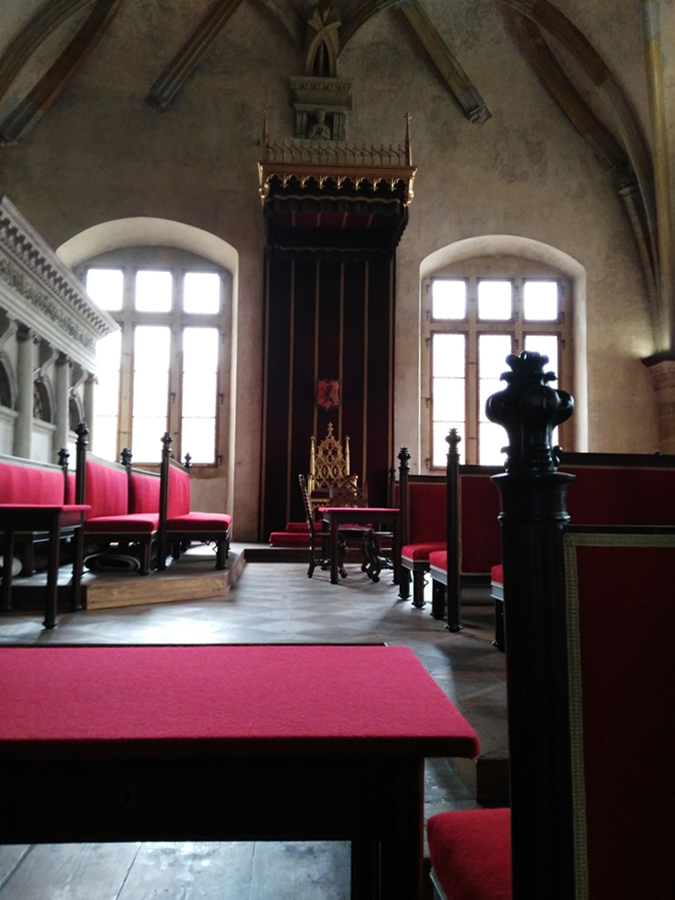
Throne Room
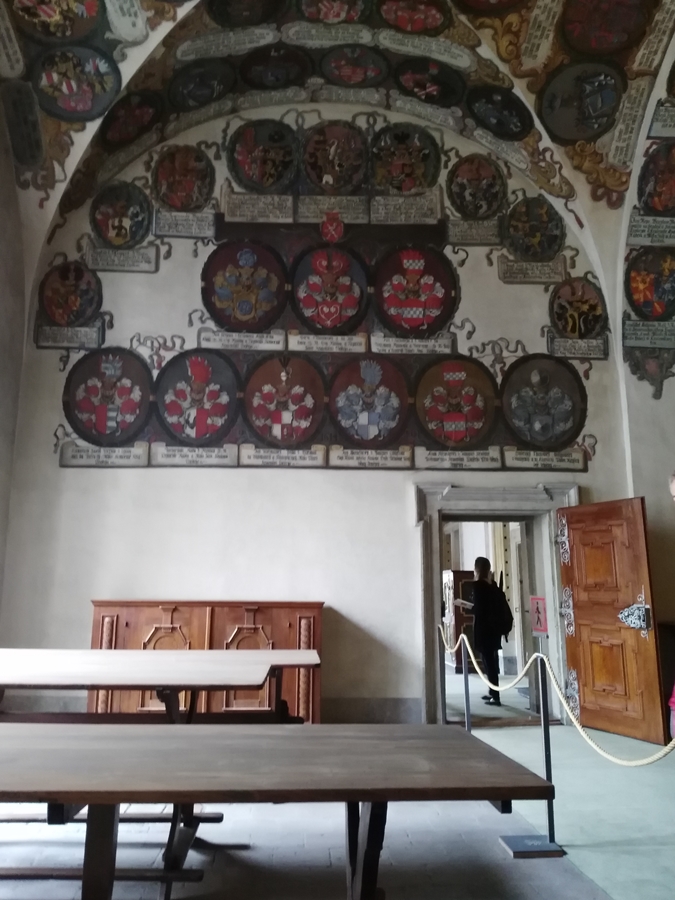
Interior of the Prague Castle
History of the Prague Castle
Our visit went on descending into the Gothic cellars of the castle, where the “History of the Prague Castle” permanent exhibition is set up. Here is told the history of the area where the castle stands, from prehistory to present day through artifacts and scale models, which describe the various stages of development of the castle. You can also see many religious objects, funeral clothes and jewels, which tell the life of kings, queens, saints and all those who lived and worked in the castle. I have no images to show you for this exhibition, because it is strictly forbidden to take photographs, even if at the entrance the photo license has been purchased for the other areas of the Prague Castle.
St. George’s Basilica
St. George’s Basilica (Bazilika sv.Jiří) is located behind the St. Vitus Cathedral. It has a red baroque facade, although it was a later addition, as this is the oldest religious building of the Prague Castle complex.Its antiquity is visible in its stone interiors, illuminated by the light that enters through the large windows. Looking towards the altar, you can see the painted tomb of Vratislav I of Bohemia and two staircases leading to the choir, to the right of which there’s the Chapel dedicated to St. Ludmila, St. Wenceslas’ grandmother, murdered by her daughter-in-law in 921. She was canonized soon after and became the first saint and martyr of Bohemia.
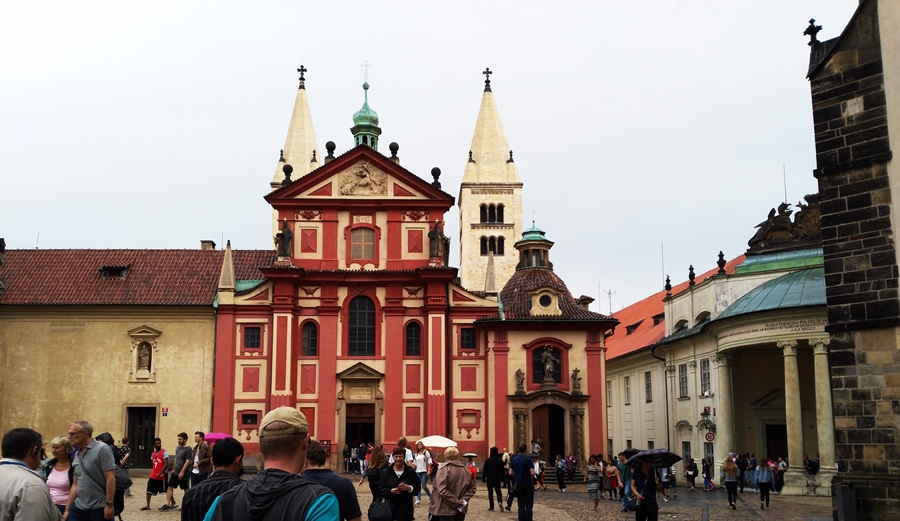
St. George’s Basilica
Culinary parenthesis
Leaving St. George’s Basilica, we headed to St. Vitus Cathedral. At the entrance, however, we found an endless queue of people waiting to enter. It was lunch time and we decided to postpone the visit of the Cathedral early in the afternoon. For lunch we opted for the restaurant located behind St. Vitus Cathedral, where we had a delicious goulash. In Prague you will find two versions of goulash: the first one served in a loaf which has previously been emptied of its crumb; the second version is served with dumplings. Both versions are very good, although certainly the first one is more particular, visually speaking.
St. Vitus Cathedral
Closed this culinary parenthesis, let’s go back to the visit of St. Vitus Cathedral. After lunch, fortunately, the queue at the entrance to the cathedral was significantly shorter and within minutes we were able to enter.
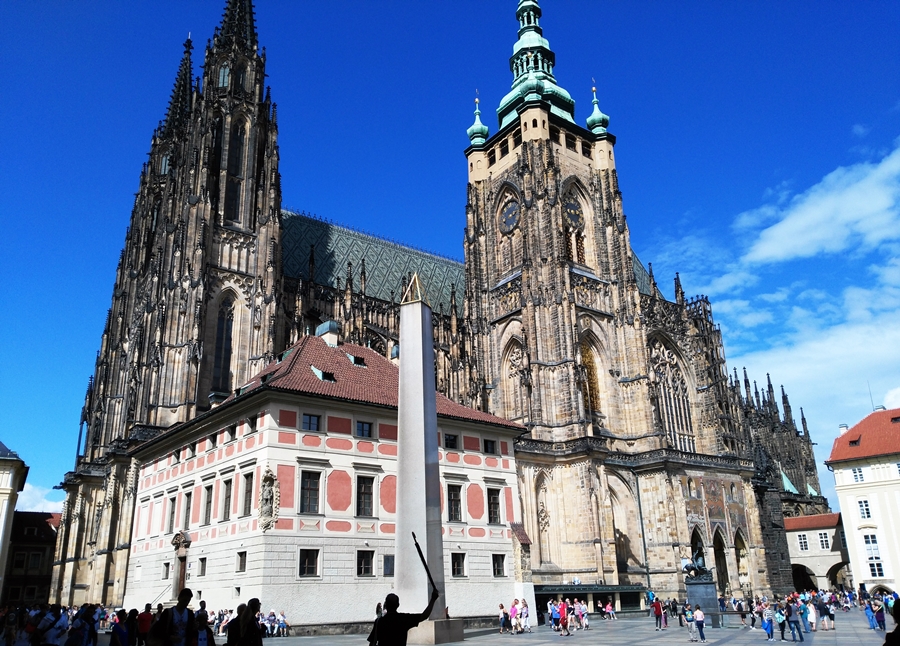
St. Vitus Cathedral
I will never forget the Wow effect I felt as I entered the cathedral. First of all to hit me was the height of the building. Yes, I had already entered other cathedrals – my first time was in Seville – but this sent me the same kind of amazement experienced in the Andalusian city. This building was thought of as a coronation site and for this reason, it was built with such high spires, so as to be closer to God.
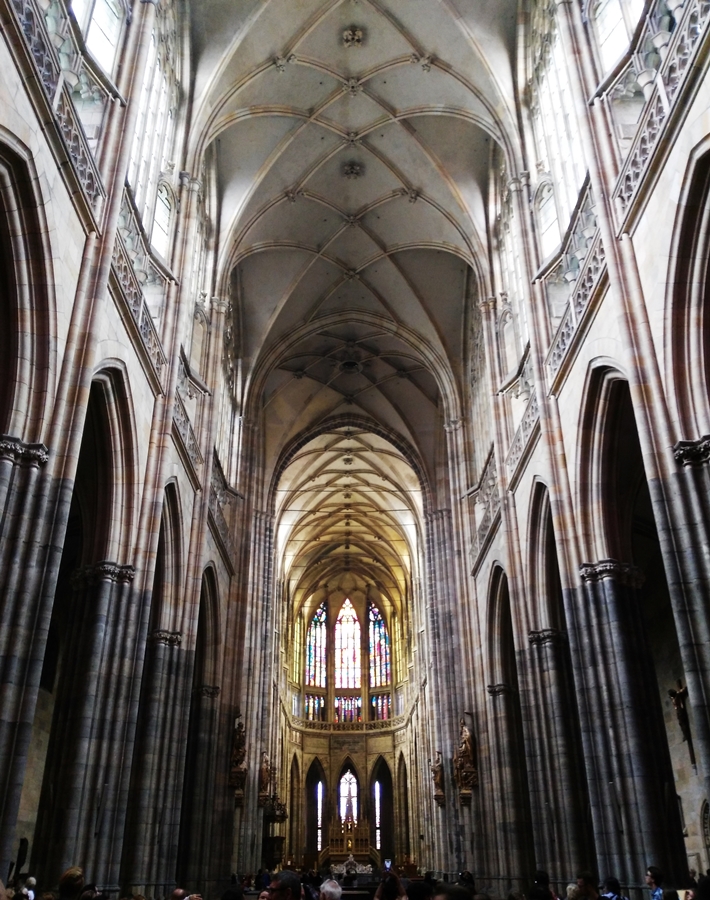
Interior of St. Vitus Cathedral
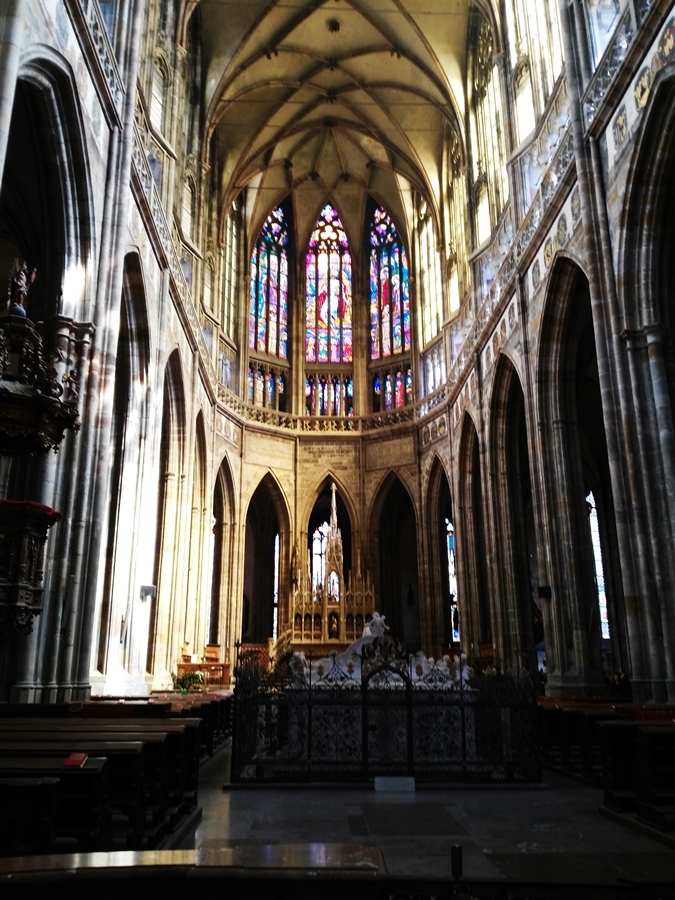
High altar of St. Vitus Cathedral
Once inside the Cathedral, windows caught immediately my attention. They are made of Bohemian glass and are very colorful. Their colours are accentuated when they are hit by the sun rays, creating a beautiful light effects inside the Cathedral.
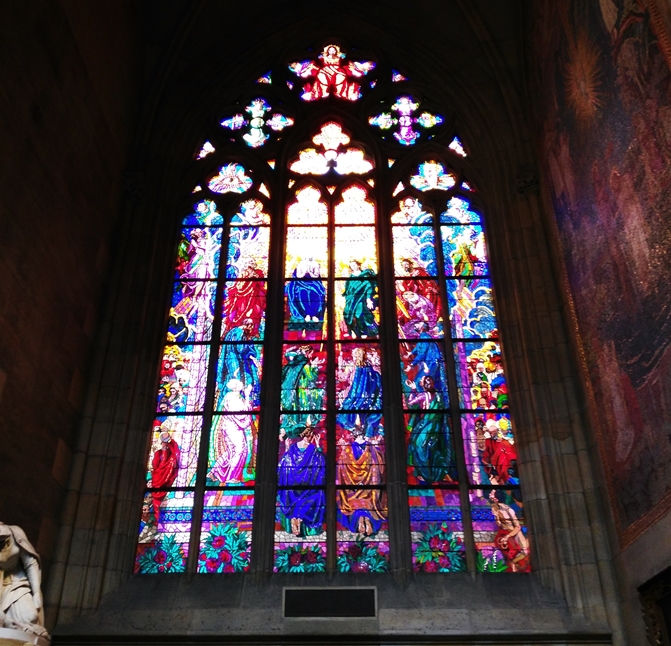
Stained glass window of St. Vitus Cathedral
When you’re inside the cathedral, you’ll spend most of the time looking up the very high spiers, the colourful windows and the various decorations. Behind the high altar is the silver Tomb of St. John of Nepomuk, the saint who challenged King Wenceslas IV. Another must-see is the St. Wenceslas Chapel, patron saint of the Czechs.
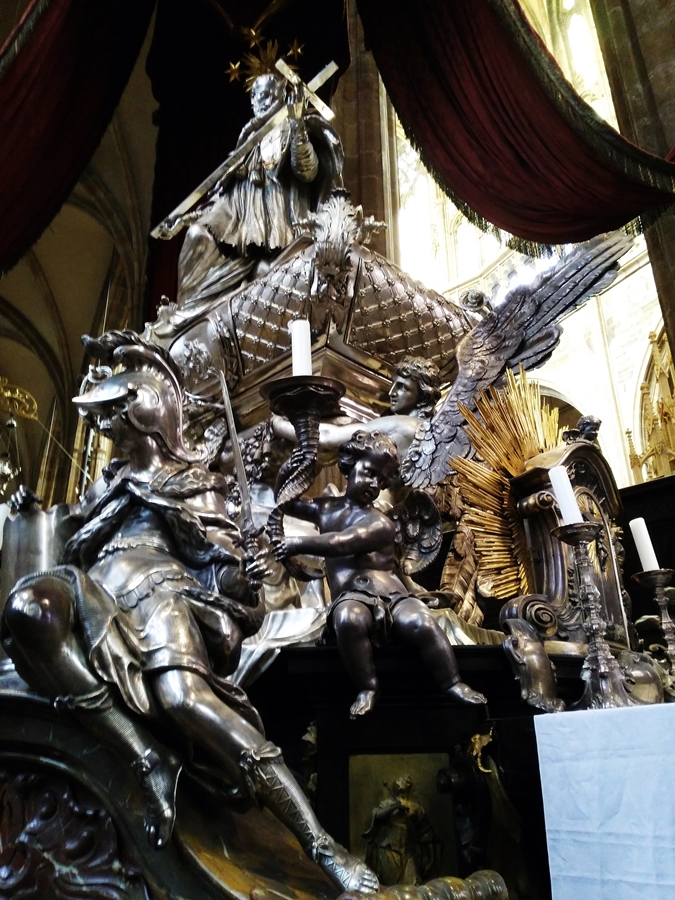
Tomb of St. John of Nepomuk
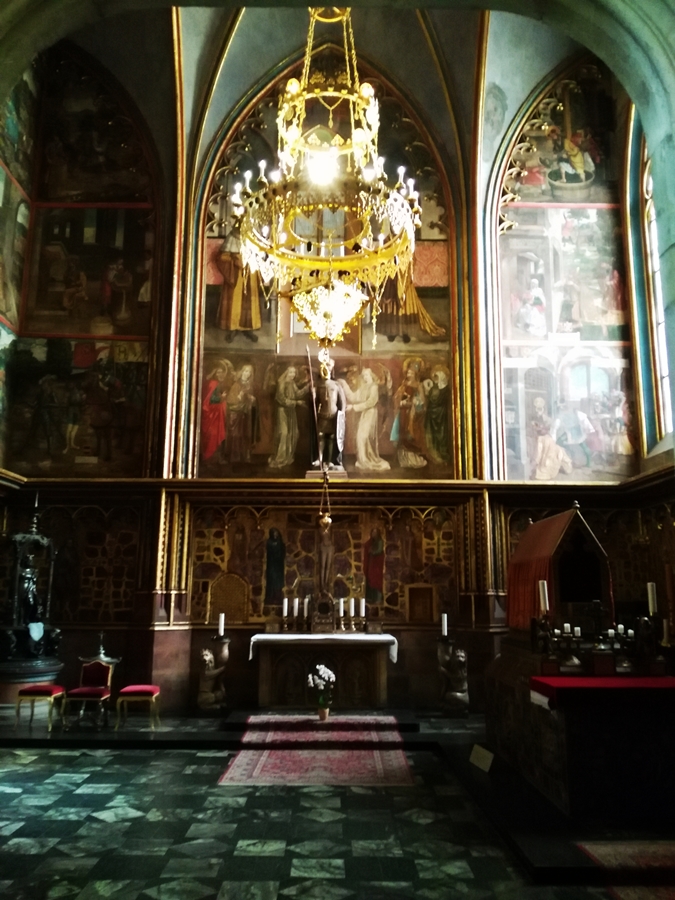
St. Wenceslas Chapel
Mihulka Powder Tower
Our tour continued at the Powder Tower. It was built in the fifteenth century and was used as a laboratory of alchemy, as a deposit of gunpowder (hence its name), as an underground prison and as the residence of the sacristan of St. Vitus Cathedral. Inside it is possible to visit a permanent exhibition on the guards of the Prague Castle, where uniforms and weapons of the guard are exhibited. Honestly, this was the only part of the visit that didn’t particularly impress me.
The Golden Lane
It is a narrow road on the north side of Prague Castle. At the beginning, there lived the guard of the castle, then from the sixteenth century it was inhabited mainly by craftsmen (goldsmiths, tailors, masons, etc.). This road is lined with small houses connected to each other, where today there are souvenir shops or reconstructions of houses of famous people who lived there. For example, there lived Franz Kafka at n. 22 and the cinema historian Josef Kazda at n. 12.
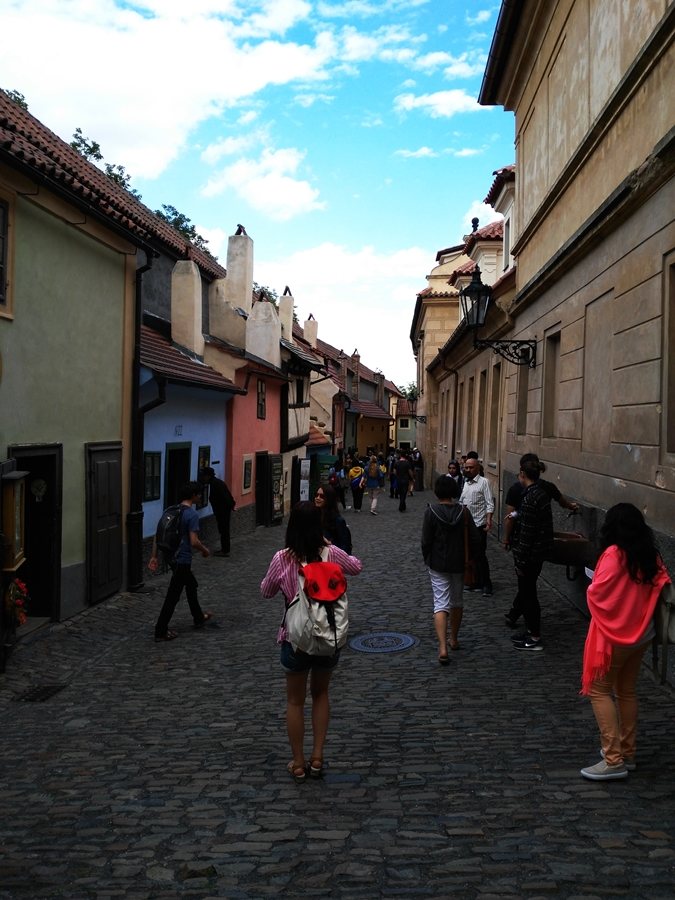
Prague Castle. The Golden Lane
In the Golden Lane there is an exhibition of weapons, armor and instruments of torture, set up in a series of connected rooms, on the upper floors. Nearby there’s also the Dalibor Tower, a prison where insolvent were held, and the execution courtyard, where today the Toy Museum stands.
Other things to see at Prague Castle
The above mentioned are the sections of the Prague Castle I visited – included in itinerary A (see above). There are other sections, whose visit requires the purchase of separate tickets: among these, the treasure of St. Vitus Cathedral, the Castle Art Gallery, Rosenberg Palace and the great southern tower of St. Vitus Cathedral.
The castle gardens
After a long day spent in the inside of the castle, a walk in its gardens is ideal for relaxing a bit. From here, you can also admire a breathtaking landscape over the city.
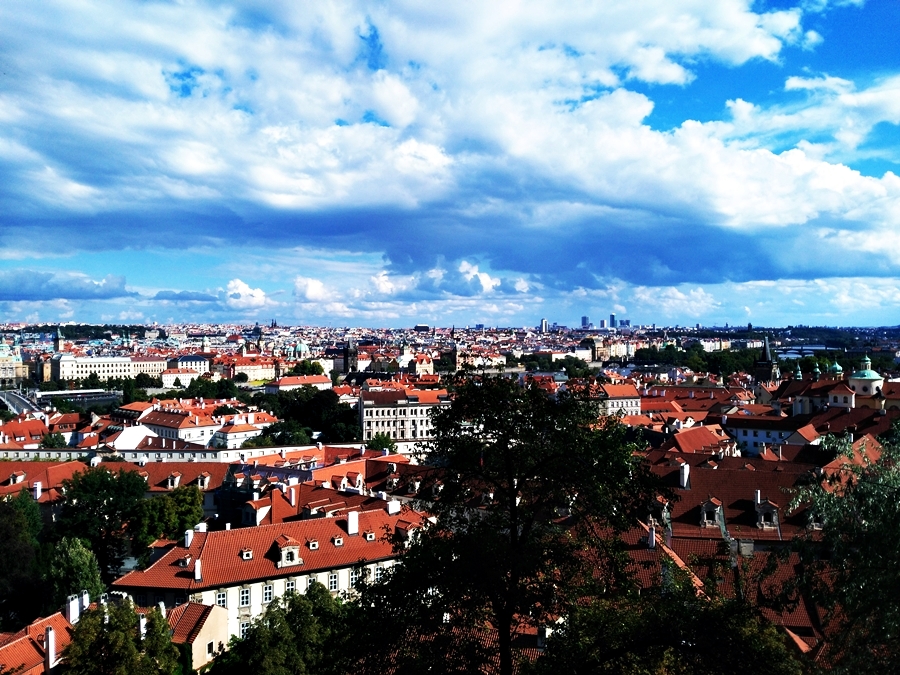
Panoramic view of Prague from the castle gardens
What to see around the Prague Castle
After our tour of the castle, we had two stops in the sorroundings of the castle. The first was the baroque sanctuary of Loreto. Unfortunately we arrived at the sanctuary at closing time, so it wasn’t possible to visit it. Not bad, because we managed to do it during the fourth day of our trip.
The second stop was the Nový Svĕt (New World), a romantic street not far from the Loreto and bordered by pretty little houses. Strolling through these little streets, you will discover another face of Prague and it seems walk in a completely different city. A quiet and peaceful place, little beaten by mass tourism. The peculiarity of this place is that many of the houses have very short entry doors – some of them even got to my shoulder. I almost had the feeling of being in Lilliput 😀

The Nový Svĕt lane
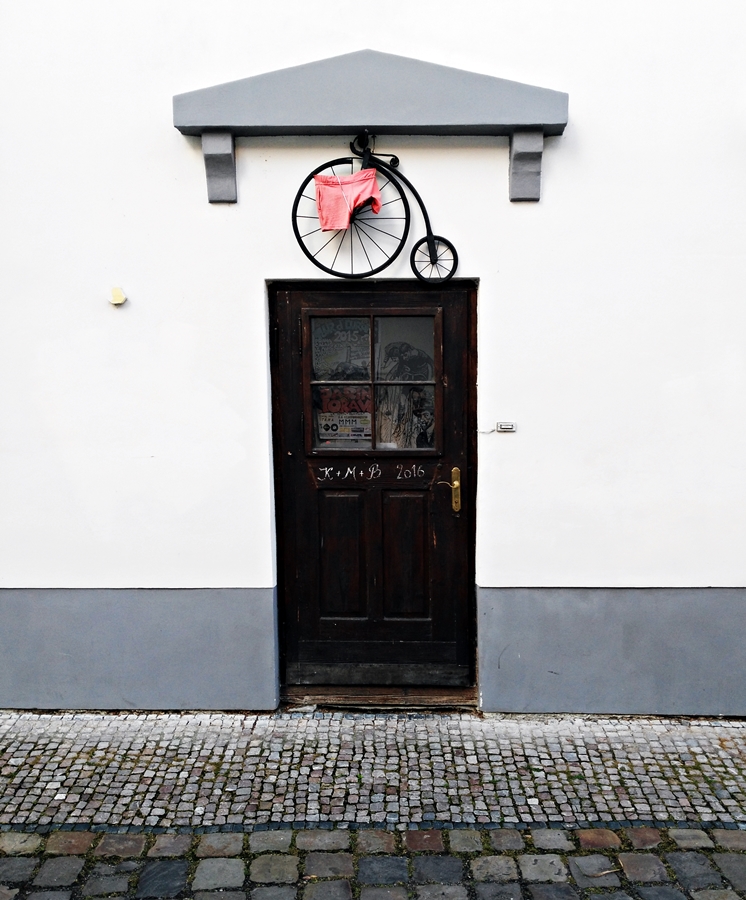
Around Nový Svĕt
Our first day in Prague then ended with a walk after dinner along the Vltava river. During this walk, we made our first meeting with the most eccentric building in Prague: the Dancing House.
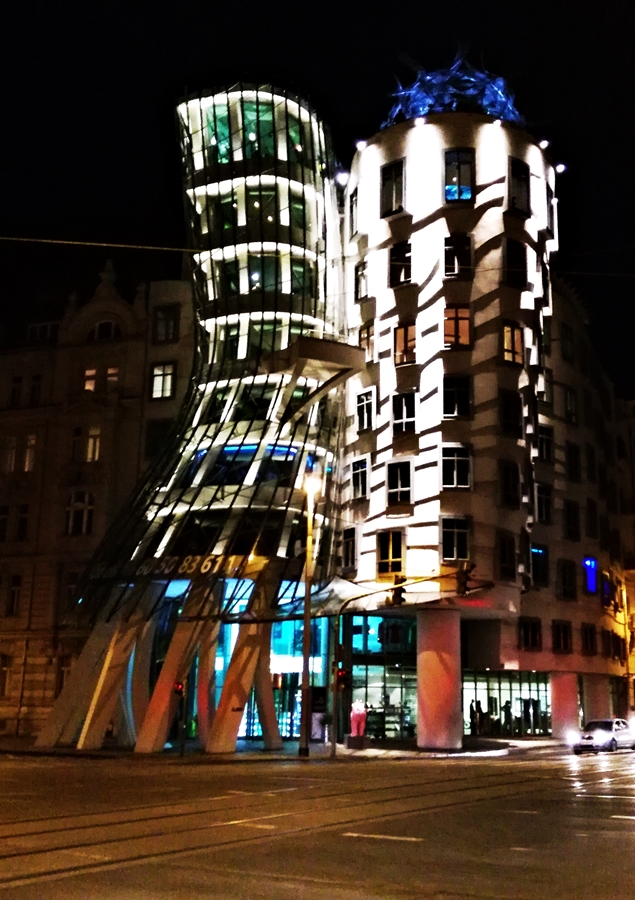
The Dancing House
In the next post I will talk about the second day of the trip to Prague, discovering the Old Town.

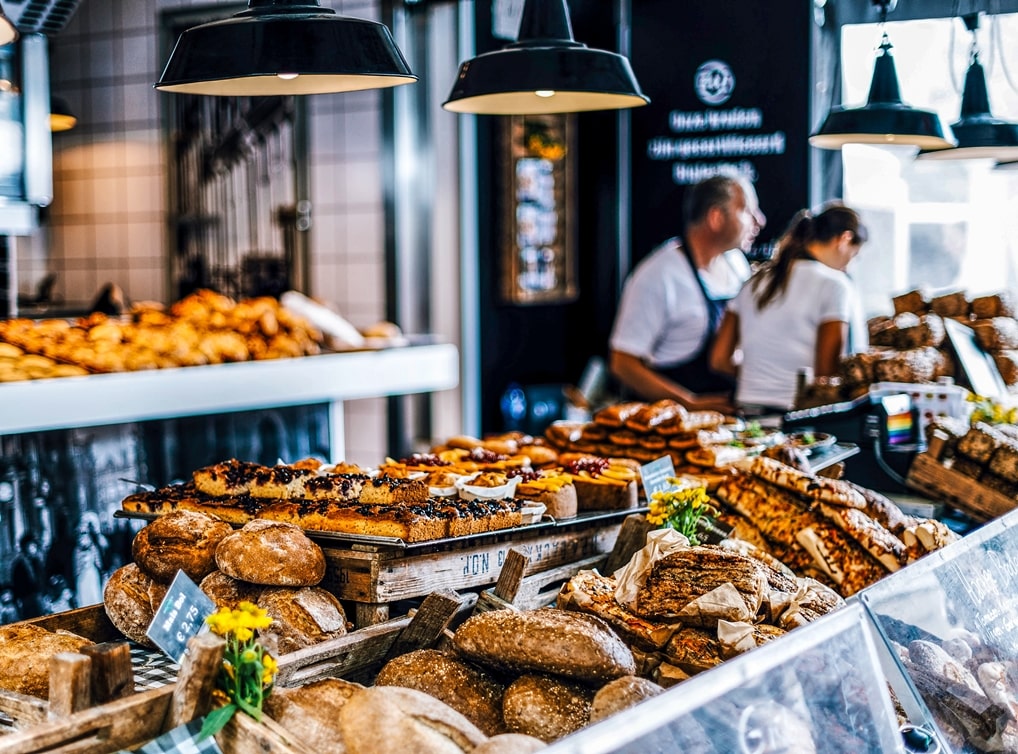
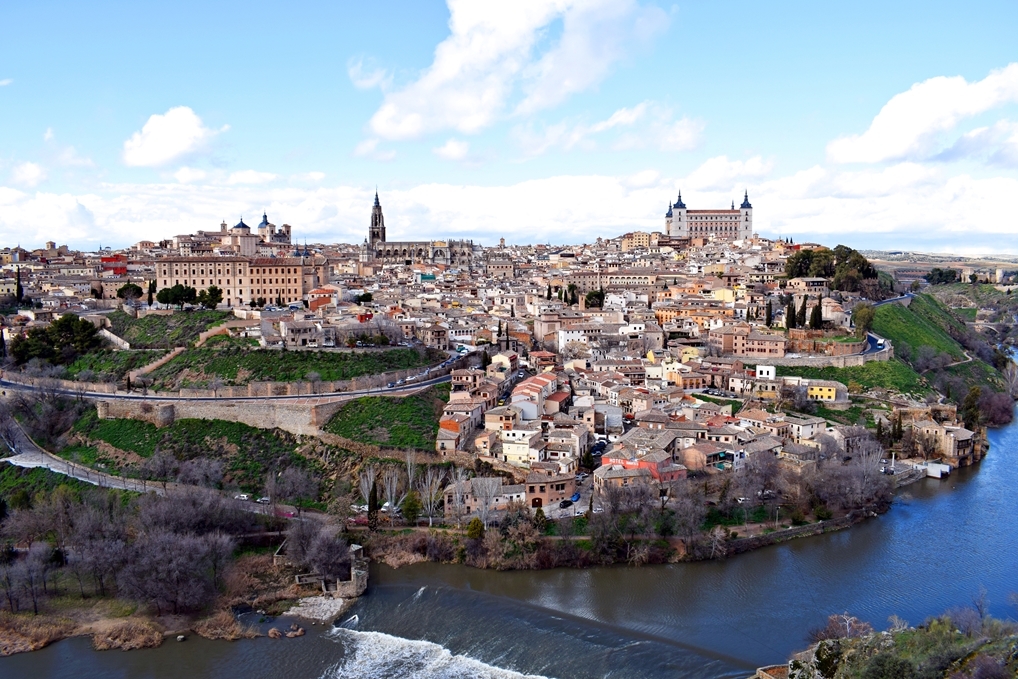
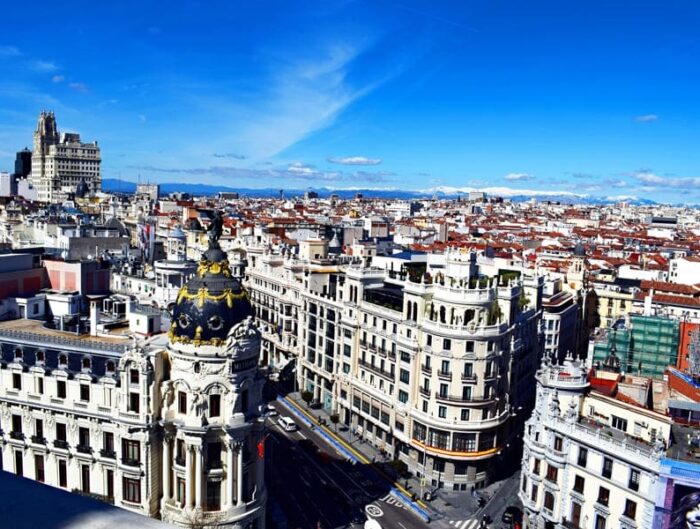
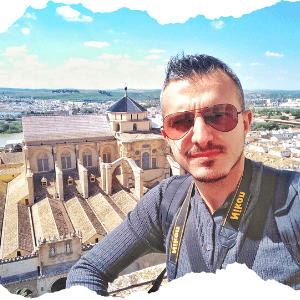

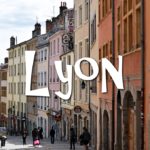

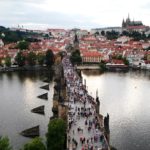

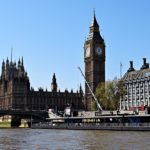

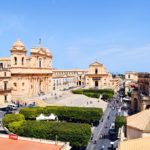

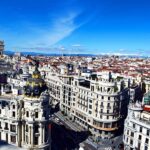
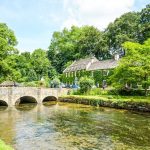
Comment